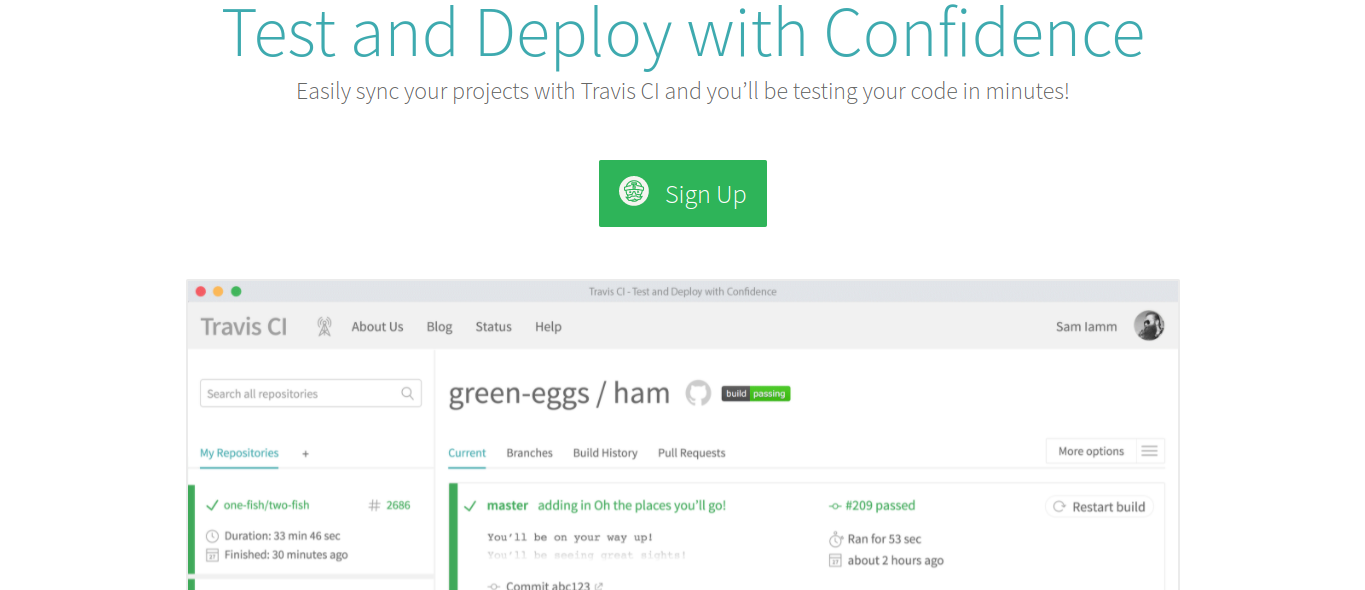To be competitive and efficient in an increasingly unstable and uncertain environment, software development teams must be fully agile and reactive to create code, fix bugs, or implement updates for their customers’ product users as quickly and frequently as possible.
Deploying code from the development environment to the production environment is an essential step in the development process. It must therefore be optimized to meet the new needs of the market.

While deployment techniques such as the use of FTP protocols were commonplace a few years ago, these archaic techniques had to give way to other, more practical, and efficient ones. We are talking today, in particular, about the automation of deployments.
This approach makes it possible to deploy applications with just one click, both in the development environment and in the production or test environment.
The deployment is done through a pre-established and optimized process to deploy code packages in the environment in question. The user only has to give the order to the dedicated software for the process to run automatically.
Why automate deployments?
Manual deployments are risky, time-consuming, and require a lot of expertise, particular configurations of different environments, and often, the availability of a lot of documentation.
For all its benefits, automating deployments is the perfect solution to address these issues. And here is what it allows, among other things, to do:
- Deployment, testing, collection of user feedback, and validation of updates can be done faster, which reduces the overall time needed to move from an idea to an end product.
- Simplify the deployment of new features for developers: this will increase team productivity and collaboration and reduce the pressure on the IT team, which can free up time for more important tasks.
- To err is human and each manual deployment has a greater or lesser probability of errors, which can delay the launch of a product or compromise its quality or security. Automation helps reduce this likelihood by pre-configuring the deployment process to make it more reliable, secure, and repeatable.
- Manual deployment is a complex task that requires advanced technical skills. Automating deployments means allowing any team member to take care of this task because it will be just a press of a button. No special technical knowledge is required.
We have discussed the need and importance of automated deployments. Now let’s look at the best deployment automation platforms:
Octopus Deploy
Octopus Deploy offers a deployment automation server that helps to orchestrate releases and deploy applications. Octopus can schedule deployments, limit deployment production, run custom scripts, and manage sensitive variables. It allows you to deploy on-premises or in the cloud.
Jenkins
Jenkins is open-source continuous integration software. Designed to reduce the time needed for software development, Jenkins automates testing and deployment of new builds, making it faster to integrate new features and updates. Jenkins is compatible with several other DevOps tools, and its functionality can be enhanced with specific plugins.
Ansible
Ansible is an automated deployment platform that offers agent-less architecture, which frees developers from the need to exploit or update agents. Ansible gives you the option to use OpenSSH and WinRM. It also provides centralized automation execution, job scheduling, and a visual dashboard with audit trails to measure performance.

Deploybot
DeployBot allows you to build and deploy the code. It supports both manual and automatic deployments. It gives you real-time progress and deployment of the code to different servers from various branches.
DeployBot also allows you to roll back a release. You can use third-party integrations like New Relic and bugsnag to analyze each deployment and its performance and stability.
Travis CI
Travis CI lets you automate testing and deployment. It can automatically detect changes in a GitHub repository and test the code. Based on the test results, the project is pushed for deployment. Travis CI gives you pre-installed database services and auto-deploy passing builds.

PDQ Deploy
PDQ Deploy is a patch deployment platform that automates patch management and allows developers to update third-party software and deploy custom scripts. PDQ deploy offers a wide range of features such as scheduling, auto-retry, and shared servers. It also allows you to deploy using Active Directory.
CircleCI
CircleCI is a deployment automation platform that lets the developers work in a branch independently. It allows you to customize the execution environment and give you many different features to collaborate with the team.
CircleCI can be integrated with various version control tools like GitHub and Bitbucket. CircleCI has a visual dashboard for monitoring builds, and it notifies you of the build failure.
Amazon Codeplay
Amazon Codeplay is a deployment automation tool known for its robustness, popularity, and its cross-platform and “cross-language character. It can be used to deploy several types of application content (code, configuration files, scripts, media files, etc.). AWS Codedeploy also makes it possible to deploy applications on various types of infrastructure, whether they are set up on cloud services or on-premise.
Google Cloud Deploy
Google Cloud Deploy allows you to use configuration as code and do repeatable deployments through its template-driven approach. It allows you to use YAML to specify the required resources. Google Cloud Deploy supports both Python and Jinja2 for parameterizing configurations. Various deployment paradigms like load-balanced and auto-scaled instance groups can be reused.
Final Words 💻
If you want to save time in your application deployments, minimize the risk of errors and simplify complex production deployment actions, then deployment automation is what you need.
Dev teams can immensely benefit from automating deployments to speed up their workflow and improve the quality of their code. Using a deployment automation approach with a platform that fits one’s needs is particularly crucial for software publishers who have to update their software or deploy their codes and those of their customers often several times a day.
You may also look at how to deploy front-end applications to Cloudflare pages.



